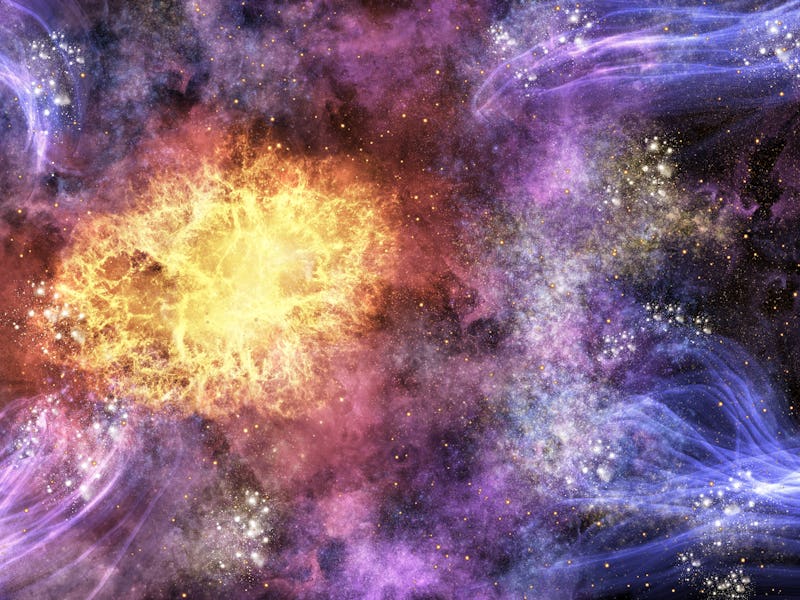Billions of Years Ago, a Supernova May Have Nearly Destroyed the Solar System
Meteorites may hold clues to a cataclysmic event that nearly ripped apart the Solar System.

Way back in time, about 4.6 billion years ago, our Sun and planets were busily forming nestled inside a cloud of gas and dust. Not far away, a supernova exploded, threatening to tear everything apart. Luckily, a filament of molecular gas protected the infant Solar System from imminent destruction.
A team of astronomers at the National Astronomical Observatory of Japan came up with this idea after examining evidence inside Solar System debris. According to astronomer Doris Arzoumanian and her team, clues to that ancient explosion and aftermath exist in meteorites. These primitive rocks date back to the earliest epochs of Solar System history. That makes them treasure troves of information about the conditions in our system’s birth cloud.
In particular, they contain what they term “an inhomogeneous concentration” of a radioactive isotope of aluminum. “Inhomogenous” means that the aluminum is not evenly distributed throughout the samples. That indicates it was more or less “injected” into the system’s birth cloud as it was forming, which implies a sudden event like a supernova. These huge stellar explosions forge the isotope aluminum-26 (26Al) found in meteorites.
The Early Solar System’s Birth Cloud
An illustration of a protoplanetary disk. The solar system formed from such a disk. Astronomers suggest this birthplace was protected by a larger filament of molecular gas and dust early in history.
There’s nothing left of the Solar System’s original birth cloud. But, we can find evidence for its chemical composition inside the planetesimals and other solar systems debris such as comets, asteroids, and meteorites. Clearly, the infant Solar System survived the supernova shock wave and went on to form the Sun and the planets we know today. But how to explain that, considering the presence of 26Al? That’s where the molecular filament comes into the story.
In a paper published in Astrophysical Journal Letters, the team describes cylindrical molecular filaments as the birthplaces of Sun-like stars. Multiple filaments intersect with each other at “hubs.” Sunlike stars form along the filaments, while large stars generally form at the hubs. Given the typical evolutionary ages of stars, the massive ones explode as supernovae and enrich their nearby environments with heavier elements. Those explosions can also shred starforming clouds, choking off future growth and damaging existing stars and their protoplanetary disks.
What Happened to Save Our Sun and Planets?
The team assumed that the Sun formed in one of those dense molecular gas filaments. At some point after that birth process started, a supernova exploded at a nearby filament hub. The team calculated that the blast wave would shred the dense filament in about 300,000 years.
However, the chemical evidence in the meteorites suggests that something protected the birth creche. They formed within the first 100,000 years in the Sun’s protoplanetary disk, all nestled inside the filament. The parent filament may have acted as a protective “blanket” or buffer, keeping the worst of the shock wave at bay. It also helped catch the radioactive isotopes from the supernova blast wave and channel them into the still-forming Solar System. That’s how the 26Al came to be in the meteorites.
Of course, a nearby supernova isn’t the only thing that can interrupt star formation. A phenomenon called “early H II feedback” from nearby massive stars can also disrupt stellar birthplaces and choke off material needed for star birth. However, the parent filament that protects against the shock of a supernova can also shield a birth creche from getting shredded by outflows from massive neighbors. What’s needed now is a closer examination of streamers and filaments in molecular clouds. How do they form? Also, what influence do they have on star formation itself? Clearly, they play an important role and need further observation.
This article was originally published on Universe Today by Carolyn Collins Petersen. Read the original article here.
This article was originally published on